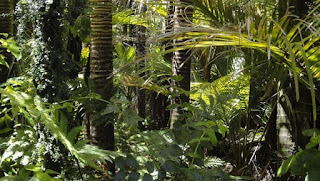Tropical forests, often referred to as the lungs of the Earth, are facing unprecedented threats from climate change. As global temperatures rise and droughts become more frequent and intense, these critical ecosystems are under immense pressure. But what exactly does this mean for our planet's carbon balance and the future of these forests? In this article, we'll delve into the latest research and explore the hidden impacts of heat and drought on tropical forests, and what it means for our fight against climate change.
The Role of Tropical Forests in the Global Carbon Cycle
Tropical forests are the most important carbon sinks on land, storing about one-third of the Earth's soil carbon. These ecosystems are crucial for absorbing CO2 from the atmosphere and play a vital role in regulating the global climate. However, their ability to perform this function is being compromised by the increasing temperatures and droughts.
The Impact of Heat and Drought on Tropical Forests
Recent studies have shown that both heat and drought can significantly alter the carbon cycle in tropical forests. An experiment conducted in Panama revealed that increased temperatures accelerate the loss of carbon from the soil, while reduced rainfall leads to a greater release of older carbon. This means that the carbon stored in these forests for centuries is being released back into the atmosphere, exacerbating climate change.
Moreover, research on the 2015-2016 El Niño event in South America found that forests in drier climates were the most vulnerable to extreme temperatures and drought. The study showed that these forests experienced the greatest impacts, with carbon balance becoming indistinguishable from zero during the event.
The Long-Term Consequences
The long-term consequences of these changes are alarming. If tropical forests continue to lose their ability to absorb carbon, it could lead to a significant increase in atmospheric CO2 levels, accelerating climate change. Furthermore, the loss of these ecosystems could have devastating impacts on biodiversity and the livelihoods of communities that depend on them.
What Can We Do?
So, what can we do to protect these critical ecosystems? The answer lies in preserving and restoring tropical forests. By protecting these areas from deforestation and degradation, we can help maintain their carbon sequestration capabilities. Additionally, reforestation efforts can help restore degraded forests and promote the growth of new carbon sinks.
Conclusion
In conclusion, the impact of heat and drought on tropical forests is a pressing concern that requires immediate attention. These ecosystems are critical for regulating the global climate, and their loss could have devastating consequences. By understanding the hidden impacts of climate change on tropical forests, we can take action to protect and restore these vital carbon sinks. Together, we can work towards a more sustainable future for our planet.
Sources:
- Caldo e siccità impoveriscono le foreste tropicali - La Redazione, 5 Settembre 2024
- The Impacts of Droughts in Tropical Forests - Corlett Richard T., ScienceDirect, 2016
- Sensitivity of South American tropical forests to an extreme climate event - Nature, 2023
- Tropical Forests and the Global Carbon Cycle - National Geographic, 2022


Post a Comment